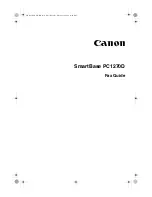
15 of 271
Using compressed air, blow the dust away from sensors and off the PCB’s in the machine. In addition,
minimize dust accumulation cleaned on all exposed surfaces. Excessive dust will reduce the useful life
span of the machine.
Sensors should be cleaned with dry, compressed air during each of the lubrication cycles. Dust accumula-
tion in the base around the control PCB should be blown out every month or whenever the base cover is
removed for any type of maintenance.
Liquid Cleaning Compounds:
Never spray liquid cleaning compounds directly onto the machine, especially if it is turned on or connect-
ed to an electrical supply outlet. Always spray cleaning compounds onto a rag and wipe the machine
clean. Liquid cleaners can, if sprayed directly on the machine, get onto electrical components and short
them out. Optical sensors are very sensitive and may be damaged by liquid cleaning compounds.
Obstructions:
Obstructions of machine movements can cause severe damage. Obstructions include things like fabric
getting caught in the gears, loose hardware left inside the machine, thread accumulation around the
grabber blade, Velcro, and anything that hinders the machine’s moving parts. It is very important to clear
obstructions from any subsystem immediately before damage or excessive wear occurs.
Use Proper Parts For The Job
It is very important that you use the proper parts for the job, especially needles. Refer to the Operator
Manual for information on needle selection. Using the wrong needle will increase the frequency of frays
and thread breaks and will decrease performance of the machine.
Avoid using substandard substitute parts on the machine. Always use manufacturer distributed parts or
better to ensure superior quality output of your machine. When considering buying substitute parts, i.e.,
hardware, it is strongly recommended that you consult Technical Support and obtain the specifications to
ensure that you get the equivalent grade or better parts.
Use The Correct Tools When Making Repairs
Always use the correct tools when making repairs or performing maintenance on the machine. No at-
tempt has been made in this Manual to explain what tools to use. It is assumed that the person who
makes repairs or performs maintenance on the machine has the proper technical aptitude and training to
allow them to do so. Using tools incorrectly or using the wrong tools can cause damage to the machine
and result in personal injury.
The use of poor quality tools such as multimeters and mechanical measuring devices can produce unpre-
dictable and often unsatisfactory results. Always purchase tools for repair or maintenance on the machine
that are of standard design and professional quality. You may if desired, consult Technical Support for
assistance in recommending such tools as multimeters and measuring devices before you purchase them.
Table of Contents
















































